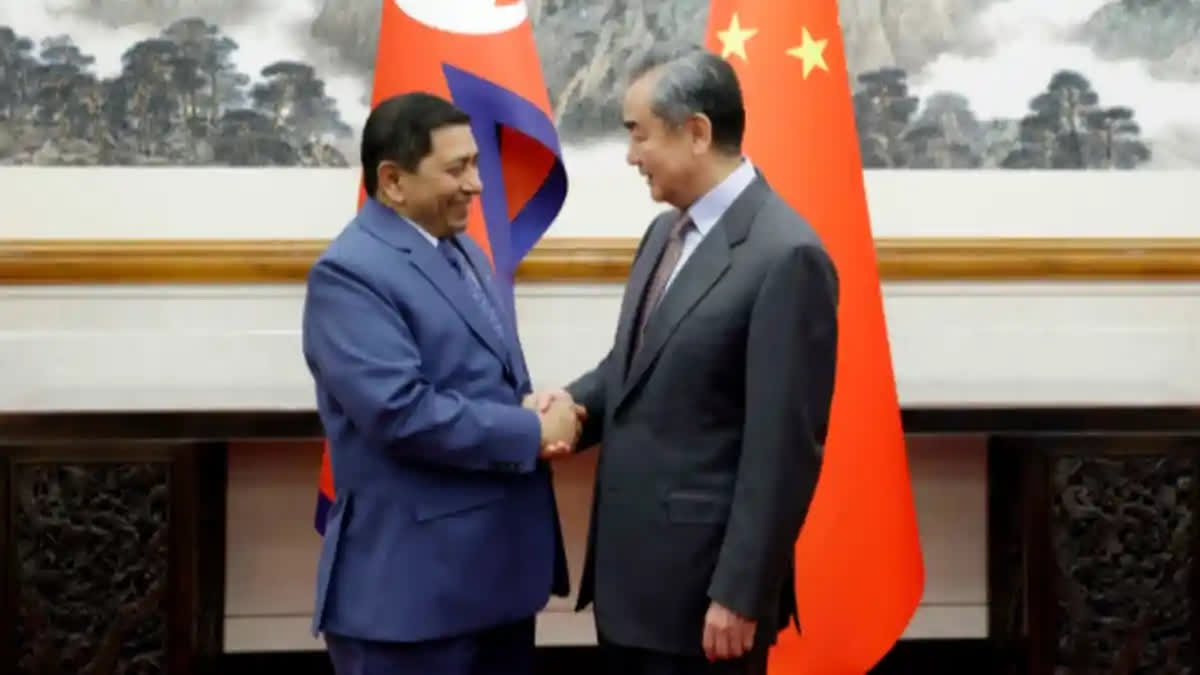New Delhi: Though Nepal has proposed to China the construction of an economic corridor passing through Chinese provinces, the whole issue of feasibility comes into play here. Returning to Nepal after a nine-day-long official visit to China, Nepal Deputy Prime Minister and Foreign Minister Narayan Kaji Shrestha told reporters in Kathmandu that he had very positive discussions with Chinese officials regarding the construction of an economic corridor.
“We had very positive discussions on developing economic and development corridors between Nepal and China,” Shrestha was quoted as saying by the Kathmandu Post. “The focus of my visit was economic diplomacy. Nepal has been thinking about this new concept (the idea of corridors) after China introduced the Trans Himalayan Multi-Dimensional Connectivity Network (THMDCN), which comprises economic and connectivity corridors to be developed under the Belt and Road Initiative.”
The proposed corridor will start from the Nepal-Tibet border, pass through Sichuan and end in Chongqing province. It may be mentioned that the Chinese provinces of Tibet, Sichuan and Chongqing have been entrusted with the responsibility of engaging, promoting and expanding relations with Nepal under China’s periphery diplomacy policy.
So, what is Beijing’s periphery diplomacy policy?
China’s periphery diplomacy refers to the foreign policy approach and strategies adopted by China concerning its neighbouring countries and regions. The primary objective of China's periphery diplomacy is to maintain stability, security and influence in its surrounding areas as well as to promote economic cooperation and regional integration.
According to Jacob Stokes, a senior policy analyst in the China programme within the Asia Centre at the United States Institute of Peace, though China is expanding its influence around the world, the heart of its diplomatic efforts still lies in its complex neighbourhood.
“To advance the country’s interests in the region, Chinese leaders practice an interlocking set of foreign affairs activities they group under the umbrella of ‘periphery diplomacy’,” Stokes wrote in a special report on China’s periphery diplomacy in May 2020. “China’s strategic rationales for working more closely with its neighbours include upholding the security of its border, expanding trade and investment networks, and preventing a geopolitical balancing coalition.”
Stokes further wrote that Beijing uses a range of tools for periphery diplomacy, including deepening economic integration, engaging neighbouring major powers and at times using coercion to achieve its aims. “Although states around China’s periphery welcome trade and investment ties with Beijing, China’s more assertive actions in recent years have engendered fear and wariness about Chinese intentions,” he stated.
Now, what is the Trans Himalayan Multi-Dimensional Connectivity Network?
In 2022, China and Nepal agreed to build the so-called THMDCN following a meeting between the Foreign Ministers of the two countries. The agreement outlines that China will fund a feasibility study for a cross-border railway connecting China and Nepal. Chinese experts will visit Nepal to conduct surveys and assessments for the proposed project. This railway is part of Chinese President Xi Jinping’s pet Belt and Road Initiative (BRI). Under this initiative, infrastructure such as railways and communication networks will be constructed to enhance connectivity across the Himalayan region.
